Decorative plaster with colored stone crumbs and "silk" coatings: unique finishing of the house quickly, cheap and "angry".
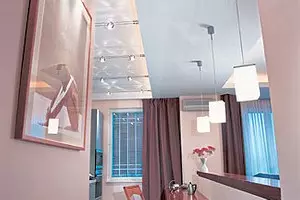
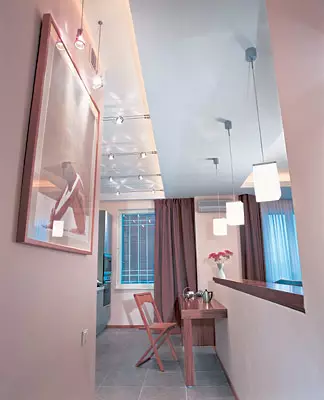
Photo V.Nepledov
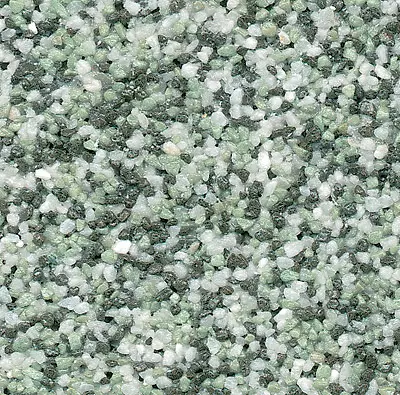
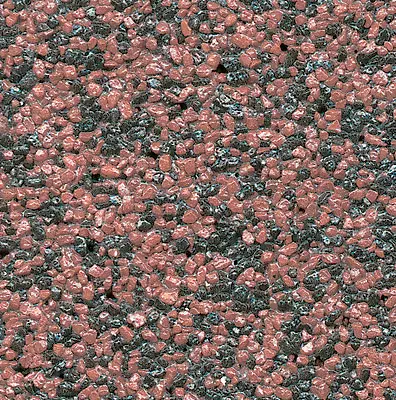
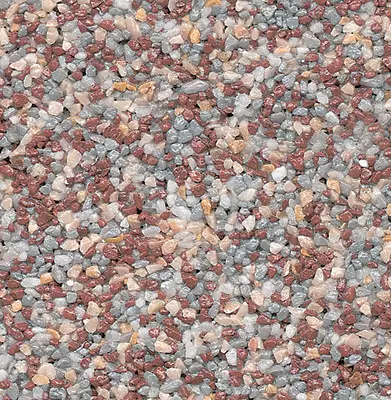
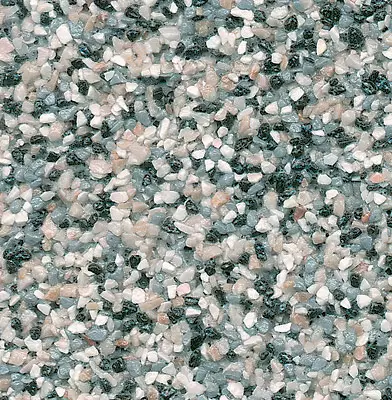
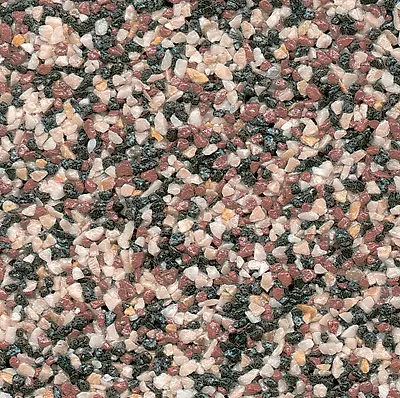
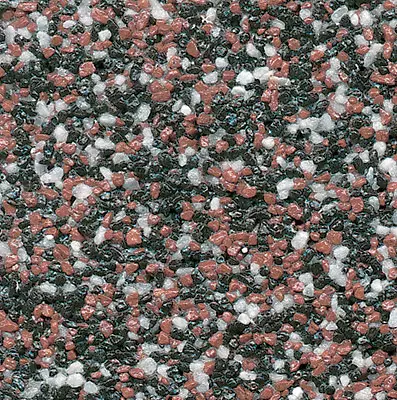
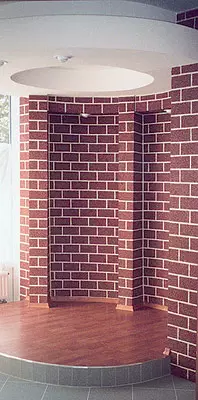
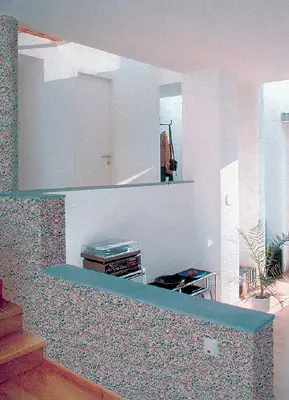
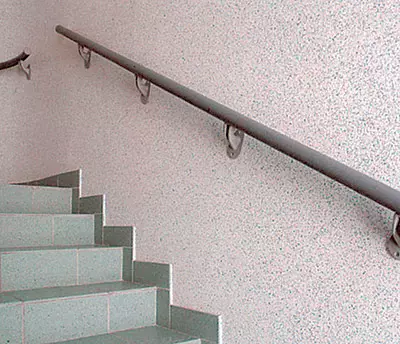
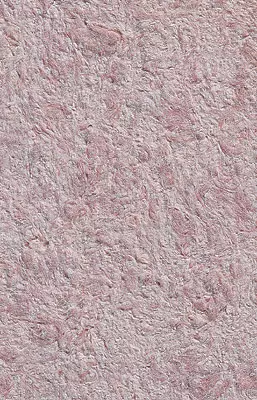
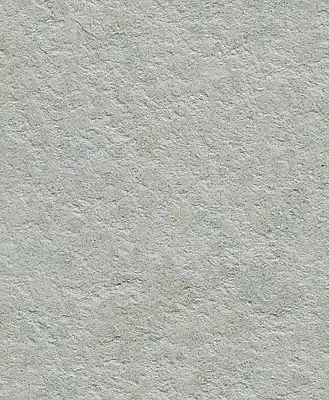
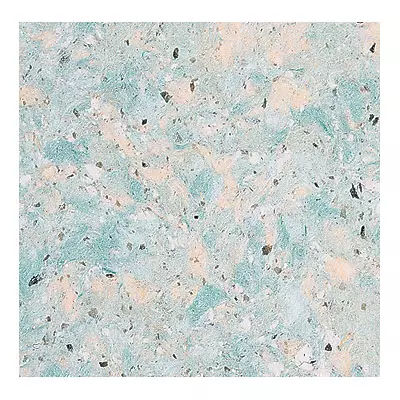
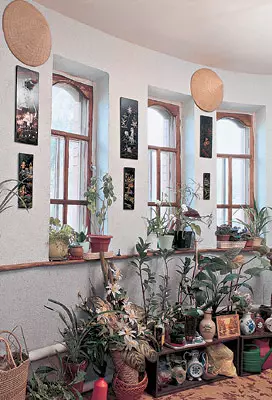
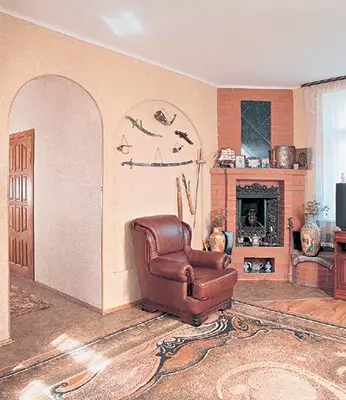
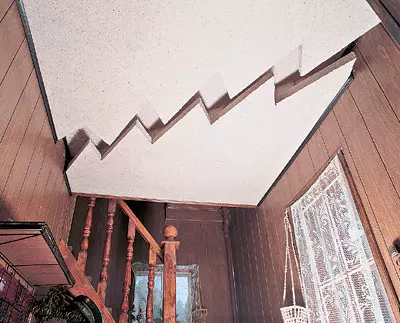
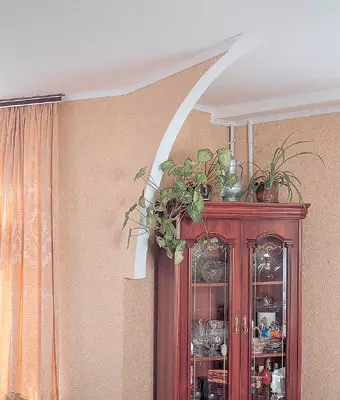
How to make an inner and outdoor finish at home, apartments, office unique and amazing? And quickly and what is called, "cheap and angry"? Let's try to consider several options for solving this problem.
Best tool
From Handra - repair.
(Folk wisdom)
Researchers argue that the technique of decorative plaster arose as many four centuries ago. The time of work time was carried out with a stamping or rustic. For the first case, stencils or forms were used to create a repeating pattern. In the second on the beginning to harde the cement, the pattern was handed. Both methods demanded from a highly qualified wizard. And, already, then he dreamed of creating an extremely technological plaster composition, whose very applied to the surface would make it beautiful and simultaneously protected from bad weather, mechanical impacts and other inevitable misfortunes. Take these dreams was destined only in our time.
"FACTURE" and "STRUCTURE"
Work on the creation and industrial production of decorative plasters began intensively in the 60s of the last century. The real results of these efforts, that is, the compositions that each of us can apply in practice have appeared much later, in the 90s. Today, hardly in every domestic khozmag, and even more than a specialized store you can find a wide range of decorative plasters. And, choosing the goods, fit not so much from the number of manufacturers, as from the abundance of the types of products offered by them.It is very difficult to figure it out. The reasons for this - in the terminological confusion arising from the lack of a single standard, and the weak qualifications of trading personnel, which, wanting to show its competence, uses all sorts of "smart" terms in relation to plasterers: "structural", "textured", "textural" , "Relief" IT.P. Sterreology Our magazine has already understood the article texture and facts. What is a decorative plaster?, Therefore, you will not repeat the "disassembly", but we will remind only its result. When using structural plasters, the surface relief is formed as a result of special operations, and in the texture, it is formed by itself, immediately after applying. That is, we attributed the most "simple" materials on the technology of applying materials with a non-decorative effect. The scheme of their use in a simplified form looks like this: "Bought, brought, opened- used- You can admire!" Today we will look at two types of similar materials: plaster with color stone crumbs and so-called "silk" coatings.
Part 1
Stuccoings with colored stone crumb
According to some reports, the creator of this material is the Turkish company Bayramlar, which began producing it back in 1988. For the Russian market, its products came in about 1994. And pretty quickly got the wider distribution. Today, in addition to the materials from Bayramlar, which is represented by two trademarks - Turkish "Bayramix" and Russian "Minellit", we have a coverage of such companies like Silcoat (Turkey) - Brand Silcoat Stone, German companies TEX-Color- BuntsteinwaschPutz, Caparol - Capa- Stone and Capatect, MEFFERT (PROFI TEX series) - "DecoCo" and "Decomramor", Terraco (Sweden) - "Terralit", Soframap (France) - DecoCeram and Decodecor Marbre, Vieko (Italy) - Graniplast, Ceramitz, Kromital, Vierocalce, "Peace of your home" (Russia) - "Plastone". With plasters of the same manufacturers like Alligator (Germany), Atlas (Poland), "Henkel-Era-Tosno" (Russia) - Ceresit trademark, our consumer is just beginning to get acquainted. Retail prices range from $ 25 for a 20-kilogram bucket of Russian-made plaster up to $ 109 for a 25-kilogram of a French coating bucket. The average price for a 25-kilogram bucket is approximately $ 50 (more - see table).
Stuccoings with color crumbs are all called differently: "granulate", "stone plaster", "Color decorative plaster under the stone", "Mosaic plaster", "Putz" (plus various derivatives from this german word) IT.P. In short, we will use the word "granulate", which fully reflects the essence of the material.
Structure
Clear classification of "granules" available. Conditionally, they can be divided into groups for several signs:
By the type of solvent. There are "granules" both on a water basis and on the basis of an organic solvent. Alternatively, almost all manufacturers either have already stopped producing the latter, or since this year ceased to bring them to the Russian market. Therefore, today we will only talk about the water-based "granules".
By type of filler. All materials under consideration are a mixture of an acrylic binder with filler. Punching filler is usually used marble granules. The books sometimes add granite and / or quartz crumb, and only occasionally can meet plasters, in which the filler is only color quartz (including the so-called ceramized).
According to the method of staining the granules. To give plaster greater decorativeness, a mixture of granules of several colors sometimes use a mixture. The entrance goes like a crumb of natural color, and colorated with organic or mineral dyes (this is done by Bayramlar and "Peace of your home"), which significantly expands the color palette of the material.
In terms of granules. The magnitude of the granules of plaster are divided into the following groups: large-factor-3-5 mm, mid-tested - 1.5-2.5 mm, fine-fucked 0.5-1mm, thin-factor-less than 0.5 mm. On the package, these sizes are not always designated, but the group to which the material belongs is to be indicated. The granules are not arbitrary, and the spherical form is pre-posed, and then calibrated. This is done so that sharp edges do not scratch when you touch the surface. The material with the same name can be produced in several variants differing only by the particle size. The size of the granules determines not only the appearance (degree of texture) of the surface, but also the consumption of composition - they are larger, the consumption is higher (it is physically impossible to put a layer of grain thinner on the wall). In this case, naturally, the price of a square meter covered with plaster surface.
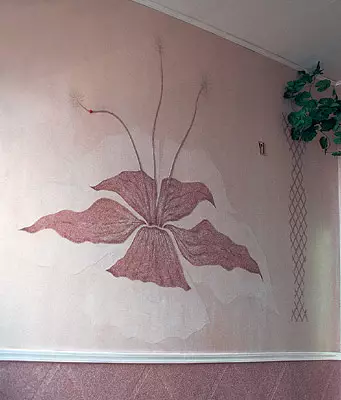
Sketch is done, color and textured solutions are being worked out. It should be noted that a large factory is well combined with an average, but bad with small (large looks convex and higher than small).
The drawing is transferred to the wall. The contours of the elements of the color that will be superimposed first are sampled with paper molar scotch.
The first color is placed, after which the tape is cleaned (until the material is dry), and the layer is given to dry. Then, with the help of the tape, the contours of the elements of the next color are sealed (if they are adjacent to already finished fragments, the surface of the ready-made should be carefully protected using the same tape).
Applying several layers per element (with a small indentation of each subsequent layer from the external borders of the previous) allows you to make it volumetric.
When creating wall panels, you can use overhead volumetric elements (can be made of plywood, drywall, IT.P. Foam), coated with a layer of the same "granulate" or structural plaster of the corresponding color.
Strengthen the impression of the panel created by the insertion from various materials. For example, the image of grass will greatly win if it "crawls" large (for example, plastic) ladybug.
Another option for creating ornaments is the use of stencils made of thin plastic. We think that the technology of drawing a picture of a stencil for a long time to explain no need. The only nuance is the "granulate" layer, it is much thicker than the stenitude itself, which makes it difficult to remove the latter. Here some skill is needed - it is necessary to remove the stencil at the moment when the "granulate" barely began to "catch up."
To P. Real estates "Granules" are accepted:
reduced requirements for the thoroughness of the basis of the base (excluded, for example, such a preparatory operation as finishing shtchevyania);
natural coating similarity;
Achieving the completed high-temperature type of surface immediately after coating;
Like most materials based on acrylic dispersions, "granulates" are not faded under the influence of ultraviolet rays, racks for heating (up to 90 ° C) and sharp temperature differences; They are characterized by high indicators of mechanical strength and adhesion to the base at good vapor permeability and excellent water resistance;
At the moment, these coatings are considered one of the most operational and durable;
they fireproof and to a certain degree of fire-resistant;
have sufficient elasticity - with small deformations of walls on the coating, cracks are not formed;
They have high chemical resistance (withstand processing even with a 10% chlorine solution used in medical institutions for sanitation). But what can be said about their Disadvantages:
Like all water-based coatings, the "granules" stimulate the corrosion of ferrous metals, which are applied (if special primer is not applied);
Acrylic in a thick layer (large-factor granulates) significantly reduces its own vapor permeability, and therefore, for example, the TEX-Color company does not recommend using its "granules" when finishing the "breathable" insulated structures, where mineral wool plates are applied as insulation, as well as basement parts of buildings in which (due to the missing or weak horizontal waterproofing) is possible sublicas of groundwater;
On the outer walls addressed to the Sun, the temperature sometimes reaches a level close to the top operational limit of the material (80-90C) - then the acrylic base may soften, and the dirt located on the surface of the coating is eaten by tightly (fortunately, such conditions are created quite rarely );
It is impossible "fragmentary" surface repair.
Application options
It is believed that decorative plasters with large granules are designed for the outer decoration of buildings (they look at the surface), and with medium and small - for the inner (the coating will be less relief, but after all, it will have to look close to it). Satim generally accepted opinion can be argued. The fact is that dust departs faster on the large-factor surface, which, if it does not delete it, is gradually entering the plaster. And then the building acquires, so let's say, not a very presentable look. It is this that makes many homeowners to apply compositions with medium-sized granules for decoration, less relief walls and dust less. Large-factor compositions are better to apply far beyond the city.It is worth noting that some manufacturers are positioned by them "granulates" as a finishing coating for outdoor insulation systems (in more detail this can be found in N 6 of our magazine in 2003), others as special material for finishing the building bases. Moreover, other applications are not excluded.
| Firm | Mark. | Application area | The composition of the granules | The size of the granule fraction | Method of application | Consumption, kg / m2 | Method of coloring granules | Quantity | Packaging, kg. | Price, for 1 to |
|---|---|---|---|---|---|---|---|---|---|---|
| Bayramlar (Turkey) | "Bayramix-Mineral" | N + B. | Marble | Large | TO | 3-3.5 | AND | 88. | 25. | 1,6 |
| Middle | 2.5-3. | |||||||||
| Small | 1.5-2 | |||||||||
| Bayramlar. | "Bayramix-micromineral" | IN | Marble | Very small | TO | 1-2 | AND | 25. | 25. | 1,6 |
| Bayramlar (Turkey) | Bayramix Saftash | N + B. | Marble | Large | TO | 3-3.5 | E. | 37. | twenty | 1,43. |
| Middle | 2.5-3. | |||||||||
| Small | 1.5-2 | |||||||||
| Bayramlar (Russia) | "Minellite" | N + B. | Marble | Large | TO | 3-3.5 | E. | 24. | twenty | 1.25 |
| Middle | 2.5-3. | |||||||||
| Small | 1.5-2 | |||||||||
| Caparol (Germany) | Capa-Stone | IN | Marble | 1.2-1.7mm | TO | four | E. | 10 (+ to order) | 25. | 2. |
| Caparol | Capatect-Buntstein-SockelPutz 691 | N + B. | Color quartz | About 2mm | TO | Around 5 | AND | 6 (+ to order) | 25. | 2.8. |
| MEFFERT (Germany) | "Decochets" | N + B. | Marble + Quartz | 1.2-1.8mm | TO | 4-4.5 | E. | 21. | 25. | 2.36 |
| 0.7-1.2mm | 2.5-3. | |||||||||
| MEFFERT. | "Decomramor" | N + B. | Marble | 1.2-1.8mm | TO | 4-4.5 | E. | 28. | 25. | 2,16 |
| Terraco (Sweden) | "Terralit" | N + B. | Marble | Spray | P and K. | 2. | E. | 60. | thirty | 1,7 |
| Small | TO | 3. | 25/30 | |||||||
| Large | TO | 4.5-5 | thirty | |||||||
| Soframap (France) | Decoceram. | N + B. | Keraminized quartz | Small | R | 1.5-3. | E. | sixteen | 25. | 4,36. |
| Soframap | Decodecor Marbre. | N + B. | Marble | Large Small | TO | 3-4 | E. | sixteen | 25. | 2.72 |
| Tex-Color (Germany) | Buntsteinwaschputz. | N + B. | Marble | 2mm. | TO | five | E. | 614. | twenty | 2.8. |
| 1.2mm | 2,4. | |||||||||
| "Peace of your home" (Russia) | "Plastone Mix" | N + B. | Marble | M 05/10 | R | 2.5 / 3. | AND | Not limited | 25, 20. | 1,14-1.3 |
| M 10/15/20/30 | TO | 3 / 3.5 / 4.5 / 7.0 | ||||||||
| Legend: n- for external work; In for internal works; R-sprayer; Shrenuel; K- cellma; And- artificial staining; E- natural colors. |
Design
The high performance properties of the material, unfortunately, played with him the evil joke - it is used mainly to finish office buildings and institutions both outside and from the inside. The participation of the consumer seems to have developed a sustainable impression that decorative plasters are intended for the office, it means that they are not a place in a private house (apartment). This error contributed to the lack of information on the valid (first of all decorative) the possibilities of the material, and also that artists-designers specializing in formulars with its use, very little.
According to experts, if, with the internal finishing of offices, decorative plasters are used on large areas, then in cottages and apartments it is better to use them on small surfaces or to emphasize individual fragments of the interior: openings, niches, protrusions, arches, boxes, racks, etc. And since the "granulate" is still colder material than, for example, wallpaper, it is more appropriate in non-residential premises: in the bathrooms, corridors, halls, etc. Let's say, in the kitchen, this material will be much more by the way than the wallpaper because it is better Protected from dirt and does not absorb smells. Outside, the plaster can be used to design both the entire building and for individual architectural elements, which as a result will look no worse lined with artificial stone (we wrote about this method in N 5 for 2003). It should also be borne in mind that "granules" are perfectly combined with other types of coatings, thereby expanding the design opportunities.
In addition to traditional applications, decorative plaster are used to create ornaments, drawings and whole artistic panels. And not only "flat", but also "volumetric" - multi-layered, which allows you to give an unusual flavor to the house or apartment. It should be borne in mind that such a "decoration" is practically the only way of "fragmentary" repair of surfaces covered with "granulate".
Surface preparation
The process of preparing the surface on the recommendations of different manufacturers is about the same and comes down to the following: the wall should be durable (not creased, without chips), dry and clean (without traces of chalk, oil, mold, fungus, etc.). For its "fortification" it is proposed to use a special acrylic primer (naturally, each manufacturer recommends the primer of its own production), the appointment of which is not so much to penetrate the microcracks, thus strengthening the wall, how much to serve the buffer between the coating and the base. Soda side, primer protects the surface from absorbing moisture from the superimposed layer (with porous material), swelling and deformation (when applied to chipboard, fiberboard, phaneur and wood), as well as the appearance of mold. Solid- protect the "granulate" layer from the "destructive" impact of the wall. The cost of such a penetrating primer, for example, from the company Bayramlar (the soil "Astar") is C = 16 in 10 liters at a consumption of 0.2-0.4 kg / m2 (Bayramlar proposes to pre-dissolve the apparent soil under the color of "granulate" to eliminate influence The color of the base is the color of the coating itself). If iron elements (nails, screws, screws, reinforcement, pipes) come to the surface of the wall, they must be protected by a special protective composition, otherwise rusty stains will be shown on the wall plane.Manufacturers such as MEFFERT, TEX-Color, Caparol, Terraco, except for the penetrating action, offer to use a special adhesion or, as they are also called, "contact" soil (each company has its own). In fact, it is a primer paint with thin quartz sand, forming a rough coating on the surface that increases the adhesion "granulate" to the base. This composition is also recommended to displaced the "granulate" color. The cost of "contact" soil is quite significant. For example, the company MEFFERT is about 21 per 10 liters at 250 ml / m2 consumption, the TEX-Color company (the material is called QuarzGrund) - approximately 44 per 20 l at a flow rate of 200 g / m2, which naturally significantly increases the price of the square The meter of the surface, but no less significantly improves its quality.
In TEX-Color, we reported that it was additionally reduced losses, improve the adhesion and the plasticity of the "granules" when applying helps the use of acrylic glue (literal and "precloser") BuntSteinputz- VorKleber (price 3.5 per 1 kg, fushed to buckets of 10 kg, consumption - from 200 to 600 g / m2, depending on the size of the grain of "granulate"). On the "pre-block" layer by the "wet wet" method and the finish coating (decorative plaster) is applied.
Street work should be carried out at a temperature not lower than + 5C, but not higher + 30s.
Methods of application
No operations for the preparation of "mixture" do not need to open the bucket (bank), and we are "ready-made product", which only need to mix (exclusion-plasters of the company Bayramlar, in which you need to pre-add 1.5 liters of water to a 25-kilogram bucket ). It can be applied to the wall with a spatula, and then sprinkle with a steel ironing, and with a certain skill-one steel cell (it will be smooth). The layer thickness in the ideal case should be the size of 1-1.5 grains. If you need to hide a small wall defect, apply a layer with a thickness of 2-3 grains, but not more. Cuttings by some grief sellers that the material "will call himself" even significant potholes and defects, we do not recommend listening. He will tell, he will call, that's just the result you can not like at all. First, it leads to an increase in the consumption of the material, and after all it is far from sup. Secondly, a thicker layer will be somewhat different than a thin, skip and reflect the light, as a result of which the "discovered" will be poured to seem dark spot. In general, and better, and cheaper wheeled and defects are pre-registered using traditional methods, putty or plaster.
Another method of applying "granules" with small particles with professional pneumatic equipment. Formulations with large and medium particles this way is not recommended due to their high abrasiveness, they instantly outline the spraying nozzle. This equipment itself is quite expensive, and it does not make sense and cheaper to acquire it and cheaper or invite professionals "Included" with such equipment, or take it for several days to rent. Both makes sense to do only if you are going to cover very large areas. Snowfield surfaces can be handled manually. Moreover, not only professionals are able to apply plaster (although they certainly do everything better and faster), but also the most ordinary desktop workmen. Avoid looks like a coating will be as if a group of artists-designers worked on him. And this is without special instructions and listening to long-term seminars, simply by carefully complying with the instructions attached to the material.
And another advice on applying the composition, heard from professionals and not reflected in any instruction. During the work, exclude all factors that can contribute to heating and, as a result, rapidly drying the material (direct solar heating, the included heating devices, etc.). Fast losing moisture make up to work much more difficult. And the loss of it when applied above.
Care
According to the overwhelming majority of producers, "granulates" are very simple in service: they can be washed with water with soap, clean dishwashes and even washing powders. At the same time, the coating for a long time retains the brightness of the color. We will not argue with an authoritative statement, we simply make a small amendment. You can wash the coating. Avota can be completely laundering strong pollution? For example, let us imagine that we have been treated with the "granulate" wall near the kitchen table, and they ourselves are bothering meat on this table. Where do splashes fly? Right! Once mine, the two will wash ... wash the purse, do not let God forget. How then "score" the suichest pollution from the embossed surface? And after the tenth "attack of forgetfulness" what will the wall look like? And since the fragmented repair of "granules", so let's say, "not very simple," that whatever spoke about the resistance of the material to washing, apply it on the surfaces that are likely to be stained by the method described above, is hardly advisable.In order to further protect the "granulate" both outside and inside the house, a special varnish is applied. For example, the company "Peace Your Home" (Brand Plastone) is "finish-varnish" sold in a 15-kilogram bucket (price taking into account the packaging is about $ 2 per 1 kg, consumption - 0.2 kg / m2) . With such a treatment, the natural color of the stone is somewhat quenched, but the surface is purchased silky-matte shine. The lacquer prevents the interaction of mineral particles with water and reagents, which are contained in it, fills the irregularities of the coating, preventing the penetration of dirt and dust in its pores, which makes it easier to make the care process (in particular, washing). The vapor permeability of the surface when coating varnish sharply decreases, which must be taken into account.
Part 2
"Silk" plaster ("liquid wallpaper" from silk)
For the first time, these materials appeared on the Russian construction market in the 90s. They imported from Turkey, France and even Japan and were considered a very prestigious and expensive finishing material. But ... Provided for consumers of a novelty pretty quickly "failed", less secured and did not pay attention to it, not to pocket. As a result, neither the other in the direction of "silk" plasters do not watch the demand for this product much lower than it deserves. And even the fact that the prices of her foreign manufacturers have long been reduced long ago (from $ 13 per 1 kg) and the manufacturing technology segmented by Russian firms offering it even cheaper ($ 3-16 per 1 kg), the demand pattern has not changed significantly. Azry! "Silk" plastering such inbounds did not deserve at all.
Plasters with artificial silk on the Russian market are presented by fairly well-known firms: French "Sendeko", Japanese Silkot, Turkish Silkoat (trademark Elegant) and Bayramlar (trademark Koza), Russian "Rodnik Art" (brand "Plaster") and " Peace of your home "(brand" Plastone "). The price depends on the composition and texture and fluctuates from 92 to 730 rubles. For packaging, which is enough for 3-5m2. Plasters made of natural silk fibers offered before the crisis of the Japanese firm Fudzivara Chemical Co (ORIENTAL COAT-14 TRADE Mark in several colors). They can be found on the market and now, the truth is quite rare. Natural silk additives are among all Bayramlar firm plasters, which explains their rather high price. The plaster with the addition of natural silk is in the range of the firm "Peace of your home" (1 view). They will cost in 277 rubles. for packaging.
What it is?
The "silk" plasterers are a composition based on cotton or cellulose, polyester, painted fibers of natural or artificial silk, as well as acrylic binder and various additives. The effect of the tissue coating is attached to the walls of the fibers (than they are larger, the stronger the effect), the impression of the "rich decoration". The "silk" plaster can be used both for finishing rooms and corridors apartments (cottages) and for office space. A wide range of colors allows you to vary shades from white-snowy winter and gentle-spring to bright summer. I want "brilliance" - there are plasters, which are specially introduced sparkles designed to sparkle in the rays of light. Want "modest, but tasteful" - select strict tones that will create a business and even government atmosphere. For the sake of justice, we note that natural silk is used extremely rarely plasters are really exclusive, and the prices for them are much higher than on materials with artificial silk.What are they good?
That there is simply no sin to hide, smooth walls and straight corners in our apartments, so there is a big problem to stick the usual wallpapers even for professionals. Especially difficult to cope with wallpaper "Shake in the junction." Ohuzh if a wall with a protrusion or a niche is falling, then in general, as they say, "extinguish the light." So you have to carry out expensive leveling of surfaces with plaster or drywall. With the "silk" plasters of all these problems, it simply does not exist - the material does not form seams, it is not afraid of the irregularities of walls and construction defects, even such when one plate from another somewhat "drove". Defects he masks perfectly, and unevenness emphasizes that, looking at them, you unwittingly think: "It is necessary! Special here, such an unusual protrusion was made to beat him!" The material perfectly fills the cracks in the places of fitting of platbands, plinths, frames, sockets and switches. Arad finishing Erker, Arch, light lamps and other "flights of architectural thought" is a coating, in the opinion of the author of these lines, is generally indispensable.
"Silk" plaster is, it can be said, "renovation", accessible to everyone. Here you and environmental friendliness (silk, even in most cases and artificial, but clean silk!), Antistaticity (the composition includes special additives, due to which the coating does not electrify and does not collect dust) and preventing the appearance of fungus, mold and other diseases (also Due to special additives). When it appears on the wall of small cracks (for example, during the shrinkage of the house), these plasters, due to the stock of elasticity, are not deformed and do not rush. And, which is important for our apartments, Liquid Wallpapers are an additional sound and heat insulator and breathe perfectly. Moreover, experts claim that the surface texture contributes to the creation of acoustic comfort: in this room, the music sounds more expressive, the speech is distinction and picky.
Plus, silk plasters are not only the wealth of flowers and textures, but also the possibility of combining them, which significantly expands the design opportunities: a small share of fantasy is enough to create their own unique design, right up to ornaments, drawings and panels on the wall (technology creation of approximately such same as "granules"). Add a wide price nomenclature to this, from economical options to exclusive.
Naturally, there is a material and cons. First, the "silk" plaster "pull" from the walls of all sorts of pollution. Secondly, it is easily absorbed by moisture and smells (especially cigarette smoke!) Therefore, they are not suitable for finishing wet premises and kitchens. And even the additional coating of acrylic varnish does not save. Thirdly, the wear resistance of them, as they say, leaves much to be better - in the areas of permanent movement of people, they will quickly vomit, and all protruding angles need to immediately protect with decorative linings.
Manufacturers are tirelessly fighting for an increase in the wear resistance of their products. For example, the company "Rodnik-Art" recently released a series of plastecropes "Victoria" with the addition of latex.
Application
"Silk" plaster simply simply. The dry mixture is packed in plastic bags and is equipped with a detailed instruction for use, following which a master who does not have special skills will impose a composition on the wall (ordinary plasters will quite cope with it, and the owners themselves can well). We open the bag, pour the contents into the container (better plastic), add a strictly required amount of water (read the instructions carefully!), We stirre and let it stand for a while (this is necessary to- time specified in the same instruction). And you can start. Plasters are applied with a spatula or plastic cells a sufficient thick layer (1-2 mm). Control the thickness of the layer it is much more difficult here than that of the "granules" (resetting, it is possible to either create too thin coating, through which the wall will be shocking, or "overdo it", and then the surface will be reminded by a bearish skin, and the material is not enough). Therefore, experts advise to control the thickness of the material consumption. Consumption should strictly match the specified on the package (it depends on the texture, it is larger, the more plaster leaves per square meter). Stucco with fine texture can be applied using a pneumatic sprayer (though, in this case, without qualified specialists, it is unlikely to cost), which, by the way, allows you to slightly reduce the consumption of the material.Naturally, to obtain high-quality wall covering, one should be pre-primed. The case of cases is quite enough acrylic soil, which will cost $ 1.5-1.7 per 1 liter. Absolutely insured against unpleasant randomilities, according to the specialists of the company "Peace of your home", will allow the use of the system: alkyd soil on an organic solvent (say, "primer M", about $ 1.5 / l) + special soil (for example, "plaston S ", which will cost about $ 2 per 1 liter). At the same time, it should not be bright wallpaper on a dark ground coating, it will be shifted. All metal surfaces, as well as when working with "granulates", it is necessary to isolate, because, due to hygroscopic, the plasters, the metal will begin to rust (spots will be shown). Apply silk plaster, as well as "granulates", it is recommended on the principle of "corner to corner".
Specifications and prices for "silk" plastering of some manufacturers
| Firm | Mark. | Method of application | Packing weight, kg | Consumption, m2 / pack. | Number of groups / textures | Color number in each group | Packaging price |
|---|---|---|---|---|---|---|---|
| Bayramlar (Turkey) | Bayramix Koza. | Plastic Kelma | one | About 4. | 48. | 48. | $ 13-24. |
| "Rodnik-Art" (Russia) | "Plaster" | Plastic Kelma | one | 3.5-5 | 10 | 10 | 140-490 rubles. |
| "Peace of your home" (Russia) | "Plastone" | Plastic Kelma | one | 3.3-4 | eight | From 12. | 92-277 rubles. |
The possibility of "fragmentary" repair
What do with traditional wallpaper, if they are scratched or stained? That's right, they cross them all over the wall, and even throughout the room. Slimming "silk" plaster is much easier, just need to not forget to leave for this case at least half-packing dry product. Repair is made: remove a damaged fragment (it should be pre-wetted with water), take out a little "liquid wallpaper" from the "storage", add water, plaster the fragment and smooth its boundaries. (True, it should be borne in mind that if the coverage has been for several years, then a plot with a newly applied material may be slightly lighter, if, for example, they smoked in the room, or, on the contrary, slightly darker if the surface burned). Did not leave? Do not matter, we carry out the "extreme" repair - remove the fragment, spread the plaster removed (the main thing is not to overdo it with water, otherwise we risk the glue from the composition of the glue), we knead and ... apply to your previous place. Everything! Spots as it did not happen!Well, and so that neither by easy, nor "extreme" repair did not have to do, it makes sense to cover the "silk" surface with acrylic varnish. Then she will get polluted less, and it will be possible to wash it. Washed or powder. True, the effect of "silkiness" almost injured - varnish is varnish.
Epilogue
Here, perhaps, all that we wanted to talk about two very interesting, but undeservedly, in our opinion, forgotten finishing materials. We sincerely hope that this publication will help you, dear readers, on the difficult way to give the interior of your home or uniqueness apartments and even exclusivity. And let it work out easily and simply, in the same scheme: "Bought, brought, opened- used- can be admired!"
The editors thanks the design studio "Rostik", the company "Rodnik-Art", "Peace of your home", "StroyKomplekt", shopping complex "Your House", Bayramlar, Tex-Color, Meffert, Caparol, Terraco for help preparing material .
